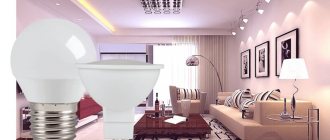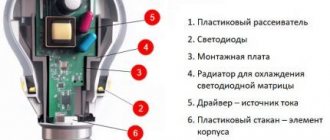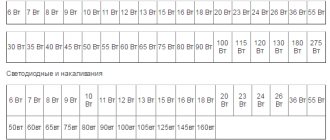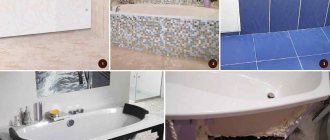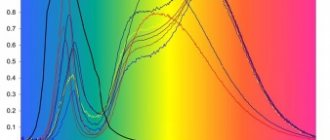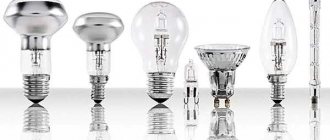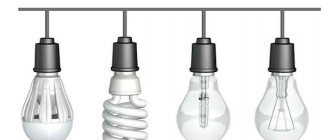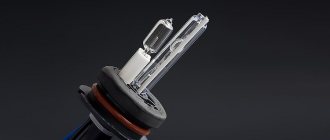What is a filament lamp
In simple words, a filament lamp is a combination of two types of light bulbs: LED and incandescent. The principle of operation is taken from the first, and the design features from the second.
Inside the glass bulb there is an LED strip connected, which is why the lamp got its name. The word "filament" is translated from English as "thread".
In terms of glow, a filament light source is almost no different from an incandescent lamp (it has a yellowish tint), but in design and functionality it is ahead of its competitor.
Rating of filament lamps
Before purchasing filament devices, it is worth studying the rating of the best:
- signature lamp from Paulmann. One of the most expensive models, combining the latest developments in the field of lighting devices. The owner will have the opportunity to adjust the color and temperature of the glow. All colors available. The light bulb has other benefits;
- LED Fil AGL 1521LM. Model from a German manufacturer. Despite the high price (about 1900 rubles), the lamp is popular because it is reliable and has the ability to regulate the glow temperature;
- in the form of an Airdim candle. Used for decorative purposes or as the main light source. It does not work with regular switches, you will need a dimmer. Base type – E14;
- FDL lamp. Base – E27. The light bulb has an original spiral shape, so it is rarely installed in lamps with a lampshade. Often used in restaurants, bars and other establishments;
- device from the Paulmann brand with a red bulb. In demand due to its appearance. Looks good in interiors with red furniture, walls or ceilings.
Design, design features of the Tomich filament lamp
Structurally, the emitter of such a lamp consists of three elements:
- Glass or sapphire base.
- Blue/red LEDs in the amount of 28 pieces.
- Phosphor coating providing white light with a special color temperature.
If we consider the design as a whole, the filament light source consists of the following elements:
- Base for E14 or E27.
- Transparent bulb with high light transmittance.
- Glass leg with elements that provide voltage supply to the LED strip.
- Filament parts.
- Driver (electronics) located in the base casing.
The driver takes up minimal dimensions and easily fits on the board. The latter, in turn, is mounted in the base of the light bulb.
This design allows the use of high-quality circuits with varying levels of complexity to reduce ripple.
Filament lamp design
The main goal of developing filament lamps is to create a complete replacement for incandescent light bulbs. Externally, these light sources really turned out to be similar: glass bulb, threaded base, no radiator. Only the “thread” looks strange, but this is only noticeable when not working.
The main differences are hidden in production technology. The “thread” consists of microdiodes coated with a layer of phosphor, consisting of a phosphorus mixture and silicone resin and providing a white glow. The LEDs are primarily blue, but some manufacturers add red to produce warmer tones. The “threads” are placed on a substrate made of sapphire glass and placed in a container filled with helium or a mixture of gases. Current is supplied through the contacts to the substrate.
There are manufacturers who use low-quality silicone as a phosphor. It causes a leak of blue light, which is harmful to the eyes, and breaks the “filament”, rendering the light bulb inoperable.
Driver
The filament lamp driver is located in the base.
This is a board with a circuit that:
- converts alternating voltage to direct voltage;
- protects filament plates from unfavorable temperatures and network surges;
- reduces the ripple factor to 2%.
The scheme consists of:
- capacitor that stabilizes the current;
- diode bridge;
- a resistor that discharges the capacitor after switching off;
- capacitor that smoothes out ripple.
The filaments are connected in groups of 3 elements in series, and the groups are connected to each other in parallel. Drivers for lamps with E 27 socket are larger in size. They contain additional elements that minimize the ripple factor.
Attention! Chinese-made products were purchased via the Internet, in which a diode bridge was installed instead of a driver. The pulsation coefficient during testing was found to be 67%.
How are filament LEDs cooled?
The “strands” of filament light bulbs are sealed in glass containers that have a certain level of thermal conductivity. Heat is removed only through the gas mixture and glass. Manufacturers claim that this is even better than a radiator, so the temperature on the diodes does not exceed 60°C. Less heat is generated due to the small size of the filaments.
What power does it produce?
The average filament power is about 1 W, and the voltage is 60 V. In general, the light bulb consumes from four to eight W and has the following parameters:
- luminous efficiency: 120 - 140 Lm/W;
- light temperature: up to 4500 K depending on the level of performance;
- service life 30,000 hours;
- ratio of output power with incandescent lamp, filament/LC: 2 – 25 W, 4 – 40 W, 6 – 60 W, 8 – 75 W.
For comparison, incandescent, LED and fluorescent lamps have power in the ranges: 10 - 500 W, 3 - 30 and 15 - 80 watts, respectively.
Conventional light sources show the lowest light temperature - 2700 K with a service life of 1000 hours.
As for fluorescent and LED lamps, they show the best characteristics: light temperature up to 6500 or 6400 K, and service life - 40 and 50 thousand hours, respectively.
Advantages and disadvantages
Even though such lighting devices are practically new in our country (it seems to be high technology, etc.), the disadvantages of this type of lighting have already been found. But first, let’s define the advantages, these include:
- Possibility of installation in ordinary sockets without additional equipment (although ordinary LED and energy-saving lamps can boast the same).
- High efficiency. Such lamps are more economical than simple LED lamps.
- Retro style appearance. For many, this becomes the deciding factor when purchasing.
- Long service life. Indeed, the stated durability is 30,000 hours.
- Powerful luminous flux, which is ensured by transparent, non-frosted glass, and also by the fact that there are no additional optical elements.
- Wide dispersion, unobstructed by the rear radiator.
- Light weight of the light device, only 30–50 g.
Well, now it’s time to consider the disadvantages of filament LED lamps. These include:
- What was just classified as a plus is a glass flask that can be broken. So this is a double-edged sword.
- In the line with E27 base there are no models for 110 and 36 volts. Only on a standard power supply.
- E27 is the largest in the line, but E40 does not exist at all, even among the Chinese.
- The price of such devices is very high. But this, of course, is a temporary phenomenon. Once upon a time, LED lamps were very expensive.
In any case, this filament LED lamp certainly has a long way to go. There are modernizations ahead and a reduction in cost, because it is really still quite new on the Russian and world markets, so, as they say, good luck.
Tomich filament light bulb driver
Using the LED principle requires installing a driver located inside the base. The purpose of the device is to reduce the current from the network to a value that is safe for LED elements.
The driver consists of the following elements:
- Fuse.
- Diode bridge rectifier.
- Smoothing capacitors.
- Pulse current regulator microcircuit with additional components. The circuit includes a diode, a choke, and an RF resistance capacitor.
The driver circuit deserves special interest. A fuse F1 is installed in the phase wire, instead of which you can put a resistance of up to 20 Ohms up to 1 W of power.
The elements of the scheme also include:
- diode bridge for rectifying current to a voltage of 400 - 1000 V, DB1;
- capacitor for smoothing ripples at the output DB1, E2;
- additional capacitance for supplying voltage to the circuit, E1;
- device driver, thanks to which the entire circuit works, SM7315P;
- capacity for filtering ripples at the output, E3;
- current sensor for adjusting the current in the light source circuit, R1 (the higher the resistance, the lower the current);
- resistance to reduce the current on the converter, R2;
- diode ensuring the operation of the converter, D1;
- storage inductance for voltage conversion, L
In fact, elements D1, L1 and a transistor switch form a typical pulse converter circuit.
How the scheme works
The principle of operation of the circuit is simple. The voltage supplied to the input is rectified using a diode bridge. Further, thanks to the action of the capacitance and capacitor, the current is smoothed.
On approaching the microcircuit, the current is converted into RF pulses, smoothed using a capacitor. Subsequently, power is supplied to the filament LED and returned to the network.
As for the driver, it includes a PWM controller and additional devices (comparators, multiplexers, etc.). They compare the real and nominal currents, and then send a signal to the PWM controller to make changes to the pulse duty cycle.
Design Features
Mass production began only in 2013, but experiments with successful results were carried out back in 2008 in Japan. The English name - filament LED - translates as “incandescent filament”. On the Russian market it was interpreted as a “filament lamp”.
The design consists of several elements:
- LED rods (filament).
- Glass flask.
- Base E27 and E14.
- Driver.
- The base is made of a poorly conductive material (optional, available on some models).
LED filament is a glass round or rectangular rod. Crystals are fixed on it using the “Chip-on-Glass” . Each rod has a power of 1 Watt .
The diodes are fixed to the flask and coated with yellow silicone phosphor. The layer must be thick enough to block ultraviolet rays and ensure uniform light dispersion . In terms of color temperature, the parameter is close to a standard incandescent lamp.
Connecting power to LEDs cannot be done using alternating voltage, so simple circuits are used.
Cooling
There is a false misconception that LEDs do not get hot. On the contrary, they get very hot, and some microcircuits do not work for even several minutes without cooling.
For small LEDs housed in SMD-type housings, heat is transferred to the contact pads installed through them.
We already know that one filament consumes an average of 1 W. For comparison, SMD diodes for 1 W of power are designed to provide about 25-30 kW. see cooling device. And here the question arises about cooling the lamps.
Please note the following:
- The filament is a matrix.
- Structurally, diodes are soldered behind the matrix part, which emit a small amount of heat due to low power. For example, if you divide 1 Watt by 28 light bulbs, you get an average of 0.036 Watts per LED.
Helium or a special gas is used to remove heat, providing minimal heating to 55-60 degrees Celsius. This allows them to be used in luminaires with fabric, paper and plastic lamps. In this case, the filament lamp thread heats up to 100 degrees Celsius.
What is filament?
The term "filament", literally translated, means "filament filament". Of course, there is no incandescent filament here, but dielectric strips of glass or sapphire are used with LEDs applied to them, covered with a thick layer of phosphor. The glow of the filaments is as close as possible to the glow of an incandescent filament.
Each filament contains about 28 small LEDs, their glow can be seen in the following photo (I deliberately damaged the filament of one filament in the lamp so that they could be seen).
As you can see, a filament lamp can work without a glass bulb. The average power of one “filament” is approximately 1 W and in order to make the filament light up, you should apply a voltage of about 60-70 volts to it (that’s why you won’t find “low voltage” with filaments).
All filaments inside the lamp are connected in series. Accordingly, if there are four threads, then the result is 4 W, and six will correspond to a 6-watt light bulb. However, I am not saying that the filament power can be slightly higher than 1 W, but it does not matter. So, don't be fooled by the promises on the box, but count the number of filaments in the light bulb.
Advantages and disadvantages of filament lamps
Before switching to filament light sources, it is necessary to understand their strengths and weaknesses.
Advantages:
- Economical.
- Uniform glow in all directions, an excellent solution for lighting a summer house.
- Stylish appearance, which allows them to be used in open lamps.
- Wear resistance.
- Long service life.
- Versatility of use and the possibility of installation in many models of lighting devices.
- Excellent color rendition.
- Minimal heating due to gas pumped inside.
- High degree of brightness.
- Easy to dispose of as household waste.
Disadvantages of filament products:
- High price.
- A fragile flask that requires careful handling.
- When the voltage is unstable, flickering appears and the quality of light deteriorates.
- Impossibility of repair.
- Designed only for 220-volt networks.
- The presence of two types of socles - on E14 and E27.
- Variation in quality.
- Complaints about short service life.
- The presence of a dead zone under the light source when the bulb is positioned vertically (details below).
Scope of use
Modern models are very relevant, as they are suitable for any area.
- The light distribution angle is 360 degrees, which increases the brightness and illumination of the room. Such characteristics are necessary for the operation of plants and factories.
- Due to its small size, as well as the variety of shapes and colors of the lamp, it can be used as a decorative element in construction and interior design.
Where are filament lamps used?
- Due to its resistance to temperature changes and power surges, it is suitable for lighting market and shopping areas, large centers, cafes, and restaurants.
- Due to the operating time (30,000 hours), it can be used for home use. It is economical and reliable.
You may be interested in this Rules for the placement of lamps on a suspended ceiling
A significant advantage here is versatility - practicality of application.
Distribution of filaments, what the market offers, selection criteria
With the advent of filament light sources, more and more people began to switch to new products. The reason was the original design and a larger luminescence angle without the use of additional optical systems. In standard LEDs, located in a plastic case, the angle is 170 degrees, but here it is 300.
As for manufacturers, products from Maxus, Videx, Philips, Osram, Lisma and Tomich lamp are popular.
Criterias of choice
When purchasing filament light bulbs, it is important to pay attention not only to the power and type of base, but also to other criteria.
Below we consider the main parameters:
- Product type: decorative lamp, lighting, special, etc.
- Base type - E27, E14 or E40.
- Voltage: 170 - 240 V.
- Power: from 2 - 12 W.
- Analogue of an incandescent lamp: 16 - 560 W.
- Brightness: from 9 - 1521 Lumens.
- Minimum lighting area.
- Light color - white (warm, neutral, cool), red, yellow, blue, amber.
- Color temperature: 1800 - 6500 K.
- Shape - ball, sphere, pear, candle, circle, spiral, oval, pencil, decorative figurine and others.
- Flask finish: matte, transparent, golden, amber, tinted, white, silver.
- Material: blown glass/metal, plastic, glass, frosted glass.
- Height: 7 - 435 mm.
- Diameter: 4 - 225 mm.
- Device control - switch, wall switch, rotary-push dimmer.
- The glow angle is 300, 320 or 360 degrees.
- Color rendering index: 77 - 90.
- Brand - Uniel, Elgo, Lexman, Osram, Gauss, Elektrostandart and others.
Additionally, take into account other parameters - useful luminous flux, availability of compatible applications, service life, maximum number of starts, energy consumption class. Pay attention to the country of origin and type of packaging.
Popular models
The market offers a large selection of filament lamps that are in demand and have received positive user reviews.
Below we highlight several popular options.
Gauss LED Filament E14 candle
Chinese product with an E14 base and a power of 11 W. The product shines like an 80 W incandescent light bulb. The lighting color is neutral white, and the maximum area is 7 square meters. m.
The convergence angle is 360 degrees, and the useful luminous flux is 750 lm. The model is designed for 50,000 starts and stops, and the average service life is 35,000 hours.
LED filament lamp Lexman
Device made in China. The model is equipped with an E14 base and has a power of 4.5 W. The declared parameters allow you to shine as well as a 40-watt incandescent lamp.
The illumination light is warm white (closer to yellow), the illumination area is about two square meters, and the illumination angle is 360 degrees.
The useful luminous flux is at the level of 470 Lm. The light bulb has a resource of 25,000 on and off, as well as a service life of 25,000 hours.
Advantages and disadvantages
Filament LED lamps are known to a small circle of consumers because they are produced in limited quantities. Their development is still ongoing in order to eliminate all shortcomings and present to the whole world the global release of new generation lamps. At the moment, those who use filament lamps highlight several pros and cons.
Advantages:
- Large lighting angle. Compared to conventional and LED models, the illumination angle of a filament lamp is 3 times greater, almost 360 degrees. A similar effect was achieved by combining completely transparent and durable glass and LED construction into one structure. Thus, one lamp can illuminate a room of 20-35 sq.m.
- Completely transparent flask. Due to this, the level of energy efficiency of the lamp increases.
Advantages of using a filament device
Please note! Incandescent and LED versions use translucent bulbs. They absorb some of the light, causing the light to become dimmer.
You may be interested in this Features of smart light bulbs
- During long-term operation, the temperature in the bulb increases to a maximum level, which prevents the light diodes from being distributed normally over the entire surface of the bulb. The result is poor lighting or “flashing.” In filament lamps this point is provided. Thanks to the special design of the LEDs, the temperature spreads evenly along the filament, heating each light crystal to the optimal temperature. This allows the light to spread better across the overall surface of the bulb and make the light brighter. In addition, the gas contained in the bulb and diodes regulates the temperature in the lamp, preventing overheating.
- Performance and performance. A regular lamp lasts no more than 1000 hours, while filament models last 30,000 hours.
- Practicality. On the market you can see a huge number of filament lamps of different colors, shapes, and types. They can be installed in lamps, mounted in suspended ceilings, floors, and so on.
- Comfort. These lamps do not flicker, the color is pleasant to the eye, and can be used as a constant light source. They are not afraid of temperature changes or power surges.
Properties of a glass bulb filament light bulb
Disadvantages:
- Small power models are available on the market. The lamps began to be produced in 2008, so their perfection is still in progress.
- Not compatible with low voltage networks.
- They cost more than regular lamps.
- The flask is made only of glass. This reduces the practicality of the model. At the moment, lamps from other materials are being designed.
- The filament cannot be repaired. If one diode from the structure fails, it can no longer be repaired like a regular lamp.
What is a meter zone
When a filament lamp glows, if the bulb is positioned strictly vertically, a so-called zone of less illumination is formed under it, which can be called “dead”. The lighting level in it is two times less than in the main lighting zone.
At a distance of one and a half meters, the spot reaches a size of 50 cm. Accordingly, it increases as it moves away from the light source.
The shape of this spot, depending on the model of the llama, the number and location of the spirals, is different.
Check pulsation when purchasing
When purchasing a filament lamp, it is important to check the ripple. Ignoring this requirement may lead to disappointment when using the device as the main lighting in a bedroom, living room or other room.
According to the laws of the Russian Federation (PP No. 1356 of October 10, 2017 “On approval of requirements for lighting devices”), the sale of light sources with a pulsation of more than 10% and a CRI of less than 80 is prohibited.
The driver is responsible for pulsation and in high-quality products this figure does not exceed 1%.
And you need to remember that inside even light bulbs of the same shape there can be two different drivers. One with normal pulsation and high-quality parts, and the second one made using cheap elements.
Determining the temperature of the glow
Few people know that the glow temperature can be easily determined by the shade of the phosphor even without screwing the lamp into the socket.
Here it stands out:
- Lemon shade - 4500 K (neutral white).
- Yellow - 3000 K (warm white).
- Orange - 2500 K (with an even warmer tint).
One glance is enough to determine the oriented temperature.
Results
Filament lamps are an alternative to LED products that offer better performance and a stylish look. Such models are characterized by versatility, high light output, a huge selection and the absence of a dead zone around the perimeter.
Thanks to their long service life, the devices quickly pay for themselves and provide high-quality lighting.
We must not forget about the shortcomings that prevent such products from “exploiting”.
Today this is the fragility of the flask, high price and pulsations with low quality of the product and electricity.

